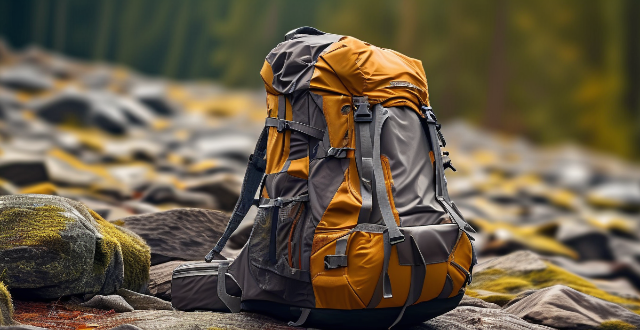When choosing a hiking backpack, consider size and capacity based on trip duration and gear needs. Look for comfort features like padded straps and a hip belt for weight distribution. Durability is key, with waterproof materials and sturdy construction. Organization is important; look for multiple pockets and compression straps. Additional features such as trekking pole attachments and hydration compatibility can enhance functionality.

Features to Look for in a Hiking Backpack
When choosing a hiking backpack, there are several features that you should consider to ensure that it meets your needs and provides comfort and support during your outdoor adventures. Here are some key features to look for:
Size and Capacity
The size and capacity of the backpack will depend on the length of your hike and the amount of gear you need to carry. Consider the following options:
- Daypacks: Suitable for day hikes or short trips, with a capacity of 15-30 liters.
- Overnight Packs: Ideal for overnight trips or weekend getaways, with a capacity of 30-50 liters.
- Multi-day Packs: Designed for extended hikes or expeditions, with a capacity of 50 liters or more.
Comfort and Fit
A comfortable and well-fitting backpack is essential for enjoying your hike without discomfort or pain. Look for these features:
- Padded Straps: Adjustable shoulder straps with ample padding provide support and reduce pressure points.
- Hip Belt: A padded hip belt helps distribute the weight of the pack onto your hips, reducing strain on your back and shoulders.
- Load Lifters: These straps allow you to adjust the height of the pack on your back, improving balance and stability.
- Back Ventilation: Channels or mesh panels on the back panel promote airflow, keeping you cool and reducing sweat buildup.
Durability and Water Resistance
Hiking backpacks are designed to withstand harsh weather conditions and rugged terrain. Look for these features to ensure longevity and protection from the elements:
- Waterproof Materials: Choose a backpack made from waterproof materials like nylon or polyester, which can resist light rain and moisture.
- Waterproof Zippers: Some backpacks feature waterproof zippers, preventing water from entering the main compartment even in heavy rain.
- Durable Construction: Look for reinforced stitching, robust zippers, and sturdy buckles to ensure the backpack can handle rough handling and heavy loads.
Organization and Accessibility
Having easy access to your gear is crucial when you're on the trail. Consider these features for efficient organization:
- Multiple Pockets: Look for a backpack with various pockets, including internal and external compartments, so you can easily store and retrieve items as needed.
- Compression Straps: These straps allow you to cinch down the pack, securing your gear and reducing excess bulk.
- Rain Cover: A built-in rain cover protects your gear from heavy downpours, ensuring that your belongings stay dry even in wet conditions.
Additional Features
Some additional features can enhance the functionality and convenience of your hiking backpack:
- Trekking Pole Attachments: Special loops or clips allow you to secure trekking poles or ice axes to the side of the pack for easy access.
- Hydration Compatibility: Look for a dedicated sleeve or pocket to hold a hydration bladder, allowing you to drink hands-free while hiking.
- Expandable Capacity: Some backpacks offer expandable compartments or detachable lids, providing extra storage space when needed.
In conclusion, when selecting a hiking backpack, prioritize comfort, fit, durability, water resistance, organization, and additional features based on your specific needs and preferences. By considering these factors, you can choose a backpack that will support you through all your outdoor adventures while keeping you comfortable and organized along the way.